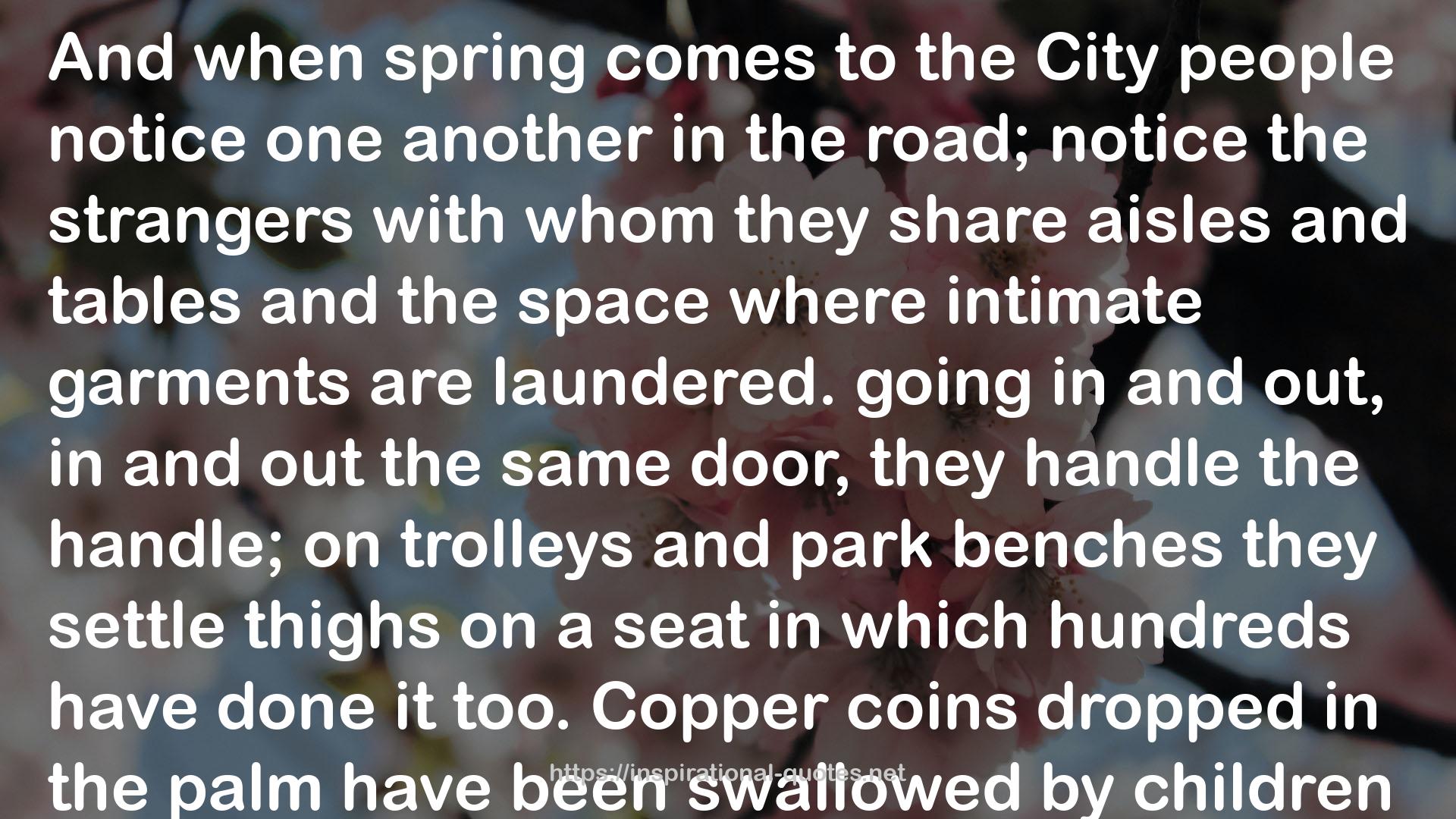" And when spring comes to the City people notice one another in the road; notice the strangers with whom they share aisles and tables and the space where intimate garments are laundered. going in and out, in and out the same door, they handle the handle; on trolleys and park benches they settle thighs on a seat in which hundreds have done it too. Copper coins dropped in the palm have been swallowed by children and tested by gypsies, but it’s still money and people smile at that. It’s the time of year when the City urges contradiction most, encouraging you to buy street food when you have no appetite at all; giving you a taste for a single room occupied by you alone as well as a craving to share it with someone you passed in the street. Really there is no contradiction—rather it’s a condition; the range of what an artful City can do. What can beat bricks warming up to the sun? The return of awnings. The removal of blankets from horses’ backs. Tar softens under the heel and the darkness under bridges changes from gloom to cooling shade. After a light rain, when the leaves have come, tree limbs are like wet fingers playing in woolly green hair. Motor cars become black jet boxes gliding behind hoodlights weakened by mist. On sidewalks turned to satin figures move shoulder first, the crowns of their heads angled shields against the light buckshot that the raindrops are. The faces of children glimpsed at windows appear to be crying, but it is the glass pane dripping that makes it seem so. "
― Toni Morrison , Jazz (Beloved Trilogy, #2)
